Distinct geopolitical challenges frequently are the major force behind revenue changes for the Top 225 International Design Firms. Yet as climate change, energy transition and decarbonization goals drive forward a global shift to sustainability, firms are distinctly reconfiguring operations to generate more sustainable solutions.
In June, Stantec announced that it would purchase Chicago-based engineering firm Environmental Systems Design for an undisclosed amount. Ranked No. 7 on this year’s Top 225 list, the publicly-traded buyer said the acquisition would increase its U.S.-based MEP and structural engineering practice by 40% while also strengthening its capacity in mission critical facilities and data center design.
Amid globally compounding extreme weather events and energy demands, Stantec forecasts more business in facility development to maintain building infrastructure, emergency dispatch, data storage and other critical functions.
“We know that resilience continues to be a key request for our global teams. This includes prevention and recovery related services tied to extreme weather events,” explains firm President and CEO Gord Johnston. “Data centers, such as hyperscale facilities, require special resilient design considerations developed by … teams with regular exposure to the evolving needs of large-scale companies.”
Related Links:
ENR 2023 Top 150 Global Design Firms
ENR 2023 Top 225 International Design Firms
View complete 2023 list, with full market analysis
(Subscription Required)
Like many listed Top 225 firms, Dewan Architects + Engineers’ work in energy efficiency and climate resilience has always been a part of its company portfolio, says CEO Ammar Al Assam. What has changed is “the end user becoming more aware of these factors, which is compelling clients and owners to pursue specific environmental and energy ratings,” he says. “More regulations are still needed for widespread effectiveness.”
Yüksel Proje sees a shift to more collaborative contract models that emphasize setting mutual goals, risk sharing and problem-solving, says its international projects coordinator, Selvet Duygu Akbaş. “This approach can lead to better project outcomes and stronger relationships between owners and contractors.”
As the world faces the widespread effects of climate change, “construction faces a pivotal moment,” says Surbana Jurong Group CEO Sean Chiao.
“Rising temperatures threaten essential materials like concrete and steel during transit, prompting an urgent need for innovative solutions,” he says. “Embracing the call to ‘build back better,’ the industry is ushering in an era of sustainable design and engineering.”
*Click the image for greater detail
Rising to Challenges
Top 225 revenue last year increased 8.8%, to $73.60 billion, from 2021, with median revenue up 1.82% to $48.7 million. Nearly three-quarters of the 213 firms that filed last year reported an increase in revenue, with about 26% reporting a decrease. About 51.2% saw revenue rise by 10% or more. Of 185 firms that filed backlog data, 74.1% said it is higher than what they reported on last year’s list—up from 68.9% reporting an increase on the previous year's survey.
Tooru Seike, Pacific Consultants Co. global business development manager, names political instability, inflation, labor shortages, shorter proposal deadlines and “continuously extended” evaluation dates among challenges that are negatively impacting the international design market.
“The most common requests from overseas clients are related to the construction period and to cost reduction,” says Seike. “In response to these requests, we negotiate tenaciously and try to come up with solutions that are satisfactory to both the client and ourselves,” he adds.
Overall, France-based Setec, ranked at No. 67, has experienced “very high demand,” with 2022 a “record year in our international markets,” says Executive Vice President Anne-Marie Choho. The company is ranked No. 67 this year. But she says its move into new markets has been somewhat limited by labor and material cost inflation.
*Click the image for greater detail
“As engineering companies, our main asset is our employees, and the momentum of our success is built on their enthusiasm and commitment,” says Choho, who adds that the firm still sees projects with major CO₂ emissions. “The whole world is facing the challenge of climate change, and our teams, especially our younger colleagues, expect their professional activities to be focused on providing solutions.”
She says, “Of course, not all our clients are at the same level of sensitivity to these subjects.” Regulatory frameworks and pressure from stakeholders often push owners to seek the least expensive and fastest solutions, “which are often less ambitious in terms of environmental impact reduction.” Choho contends that “governments must therefore act to generalize the new virtuous standards.”
Regionally, Top 225 revenue is up 14% in the U.S., 46% in Australia/Oceania and 43% in Latin America and the Caribbean. In Canada, revenue has decreased for the second straight year, down about 8% in 2022, the lowest total for the region since 2018.
Market revenue increased across all sectors tracked by ENR, with the highest performing, telecom, rising 32%. Overall, that market is up more than 96% since 2019, with average international revenue from telecom increasing to $16.6 million from $11.7 million on last year’s Top 225 list.
As countries look to rapidly reduce emissions while reconfiguring their energy supply, Craig Shanaghey, Wood executive president of projects, says there is growth potential for markets such as carbon capture, hydrogen and biofuels.
“This trend is channeling capital spending in more sustainable ways—creating value for the engineering and construction value chain, while also enabling a more sustainable world,” he says.“However, the economic conditions in prime growth markets have the power to truly enable or completely inhibit this progress. Tripartite long-term commitment and investment across states, asset developers and supply chains is the essential formula for an energy transition success story.”
Shanaghey explains that the right mix of the structure of fiscal and regulatory frameworks, capital investment and progressive technologies will be needed “to deliver energy at the scale and pace the world needs.”
*Click the image for greater detail
Hot Spots and Solutions
Engineering skills are more in demand as the impacts of rising temperatures and water shortages are increasingly felt. Public and private investors seek more technical solutions— ensuring continuing good times for international design firms.
Reporting double-digit organic growth, “I can’t see a change in our market because of all of those different factors,” says Philip Hoare, SNC-Lavalin Inc. president of engineering services in the U.K., continental Europe, India and Canada. But he adds, “Over the next ten to fifteen years, how we adapt our infrastructure to deal with the impacts of climate change is going to be significant.”
For Jens Højgaard Christoffersen, CEO of Denmark’s Cowi Group, “business is fine.” He reports high growth in business sectors “tied to the green transition.” The renewables business “is growing at an annual rate of between 20% and 30% and has been doing so now for the third year in a row.”
Marije Hulshof, CEO of Netherlands-based Royal HaskoningDHV, reports good growth in “everything to do with decarbonization of industry, climate resilience [and] offshore wind.” Among a new client base are insurance companies “interested in intelligence in terms of climate hazards.”
At Sweden’s Sweco Group, “the green transition continues to be a core driver … and a theme that comes across most of our business areas and projects,” says Åsa Bergman, president and CEO.
The energy transition “is a major area for us,” adds James Harris, executive chair of U.K.-based Mott MacDonald Group, which reports continuing good sales growth. Most of the firm’s energy unit engineers now are focused on renewables, he says. “But the world isn’t moving fast enough,” Harris adds.
In the transportation sector, France-based Systra SA expects annual growth of around 6%, underpinned by the “need from many developed countries to ensure the green transition,” says Jean-Charles Vollery, chief operating officer. “We need to move people … in a green way. That’s now widely shared by all the authorities around the world,” he adds.
*Click the image for greater detail
Strengthening Geographic Ties
Geographically, Systra is consolidating in three priority regions—planning more investment in the Canadian market while also targeting Australia, where its current presence is “too small compared to the potential,” says Vollery. In the Nordic countries, Systra’s third target, the company agreed earlier this year to buy SNC-Lavalin’s transportation units. Otherwise, Systra has 12 “home countries” accounting for over three-quarters of its sales, with France and the U.K. contributing about 20% each.
Across SNC-Lavalin’s core markets of Canada, the U.S. and the U.K., Hoare reports “real positive trends.” President Joe Biden’s 2021 infrastructure bill and the 2022 Inflation Reduction Act are boosting investment but are “quite slow to come through,” he says. “Canada is a strong market and we’re clearly well positioned,” he adds, while the U.K. “continues to be strong for us.”

“The whole world is facing climate change, and our teams expect their professional activities to be focused on providing solutions. ”
Anne-Marie Choho, Executive VP, Setec
The Middle East is “the fastest growing market for us,” now representing about 10% of sales, adds Hoare. “We’re seeing really, really significant growth there, particularly in Saudi Arabia.”
Seeing the Middle East as a “challenging” market, Mott MacDonald is selective about work it does there, focusing on “bottom line growth,” says Harris. He notes that in Saudi Arabia, “where the market opportunity is,” the company has more women staffers than men.
Harris is more bullish about Australia, which is “a fantastic market” with sales growing steadily at more than 20% a year. Hong Kong has a “massively ambitious investment program,” and Singapore is reviving major projects after the government paused infrastructure spending during the pandemic, he adds.
Employing about 2,400 people there, “America is probably where our ambition is greatest,” says Harris. The company aims to double its size in four years.
“Overall, [in] our key markets we do very well,” says Royal HaskoningDHV’s Hulshof, pointing to the Netherlands and the U.K. Accounting for about half of group sales, the Netherlands recorded 10% growth last year. Asia-Pacific “is doing very well [but] we struggle a bit in South Africa,” she says.
Mazouz Sahm, Euro Group vice president of global business development, points to Saudi Arabia as a construction hot spot where “giga” projects such as NEOM and the Red Sea Project will require big international construction companies to bring solutions for time savings and sustainability.
A key challenge for construction companies “is that some of these projects are located in areas that are difficult in terms of labor camps and equipment mobilization,” he explains.
Strong international relationships on the ground are key to overcoming such obstacles, says Yüksel Proje’s Akbaş.
“International design engineering projects require comprehensive and multifaceted strategies for successful planning, design, and execution,” she stresses. “Local partners can help with everything from obtaining necessary permits to sourcing local materials.”

“Working together ensures that designs align with the latest innovations and meet the region’s requirements.”
Ammar Al Assam, CEO, Dewan Architects + Engineers
Local partners can also give insight into specialized areas such as geotechnical engineering, environmental impact assessments and structural engineering, explains Akbaş.
Nippon Koei places an emphasis on expanding its relationship network by establishing local subsidiaries, offices and other local locations. Currently, the company says it has offices in 32 overseas regions. “It is important for us to develop and maintain good relationship with the local firms,” says Haruhiko Kanai, the firm’s representative director and president. Such firms can “bring in local contexts and fill out the positions suitable for local experts to enhance qualification and address requirements in the project country for project success.”
In times of significant construction industry change, “the partnership between designers and manufacturers becomes exceedingly crucial,” says Dewan’s Assam. “Working together closely ensures that designs align with the region’s construction requirements.”
However, increased collaboration often requires more labor resources many firms don’t have.
“All businesses across the world are feeling the effects of increases in the cost of materials and fuel, not to mention to labor shortages,” explains Alan Manuel, Group CEO of Currie & Brown, part of the Dar Group. “Labor usually comes in at close to 40% of the total cost of a project, so it’s easy to see how any uplift in that can put major pressure on [project] delivery and could mean many are delayed or re-scoped.”
During a time when countries need it most, “this means our society and economy could miss out on the buildings and infrastructure it needs,” he adds.
Marketplaces | By Jonathan Keller
Sydney, Australia’s New-Age Fish Market

Photo courtesy of Mott MacDonald
Mott MacDonald (No. 16) provided structural, civil and marine engineering services on the new Sydney Fish Market in Sydney, Australia, which replaces the old market on Blackwattle Bay. Designed by Dutch architect 3XN with Australian firms BVN and Aspect Studios, the wavelike roof is a timber gridshell structure that helps ventilation and allows daylight into the building. It will also collect rainwater into large sumps for irrigation along the promenade and host a photovoltaic array. The project, which includes 6,000 sq m of new open public space, is set to open in 2024.
AI Integration
Many Top 225 international firms are finding extra hands in the form of tech solutions.
For Italferr Chief International Business Officer Roberto Borghi, the No. 1 request the company receives from international owners is designing and delivering sustainable and resilient infrastructure. To help with the added labor such projects require, he says the company is investing in developing its services based on a holistic sustainability approach—including BIM technologies and digital innovation to support project design, delivery, operations and maintenance.
At Nippon Koei, “application of BIM contributes to speedy calculations and saves time in design preparation and design changes,” adds Kanai. Additional artificial intelligence integration helps the firm generate a more accurate analysis, resilience forecast and design.
“Digital transformation of projects is a real opportunity to accelerate project execution, increase performance, control risks and optimize timeframes,” says Stéphane Aubarbier, deputy CEO, Assystem. He says accelerating timelines will be crucial to bringing low-carbon projects online faster, enabling them to contribute sooner to climate change mitigation.
In shoring up its AI and technology capabilities, Dar Group recently acquired CopperTree Analytics, a Canada-based firm that is a leader in advanced monitoring of building assets with live data.
“This was a particularly important move for us, as we continue our evolution to fully integrate our digital and design capabilities right across all our markets,” says Faysal Shair, head of digital solutions for the firm. He explains that CopperTree’s platform offerings directly complement Dar Group’s existing Para digital twin solution.
“We have truly market-leading capabilities in the digital space,” says Shair. “We are particularly excited about leveraging the AI-powered intelligence as well as the analytic and visualization capabilities of Para and CopperTree Analytics to drive more sustainable performance in the built environment.”
While firms have found niche uses of earlier artificial intelligence applications, some are still uncertain but optimistic about recent tech developments.
Multi-unit Residential | By Jonathan Keller
Aurecon Engineers a Tight Space

Image courtesy of Areeya Property PLC & Palmer and Turner (Thailand)
Bangkok’s 57-story Soonthareeya Ratchadamri residential high-rise aims to be one of the world’s slimmest tall buildings. When complete, it would also be one of Thailand’s ten tallest buildings, based on data from the Council of Tall Buildings.
Australia’s Aurecon (No. 45) is providing structural, MEP, facade and vertical transportation engineering for the project. It says the 931-ft-tall structure’s proposed plot ratio is 1:20, similar to an iPhone.
Instead of a central core to provide stability, the project team opted for an exoskeleton. The approach increased both the lettable floor space as well as the height of each floor, allowing for more natural light, Aurecon says.
The design also features dampers, which act like a car’s shock absorbers, says Adam Peacock, Aurecon building structures practice leader in its Thailand and global design center. “They soften the displacements of the building when subject to wind or earthquake loads, reducing the accelerations that occupants feel,” he says. The dampers are tuned to specific structural frequency characteristics of the building to ensure they are effective, Peacock adds. The team did extensive modeling to improve structural design elements, including a proprietary tool to “digitize wind,” he says. The tool allowed the team to assess the building under a variety of wind loads, reducing the number of wind tunnel tests that were needed.
Special attention was paid to the building’s conveyance systems. “Narrow structures can be more flexible, which can result in relatively large displacements that may cause issues with lifts during operation,” says Peacock. Sangfa Thailand is project general contractor, PPS is construction manager and Palmer and P&T Group is the architect.
Transformative
“We are very much aware that ChatGPT and other AI related developments will be transformative for both our internal operations and our client-related operations,” says Royal HaskoningDHV’s Hulshof. “It’s difficult now to foresee what it [ChatGPT] will entail, but we take it very seriously,” she adds.
“It will transform … the way we work,” echoes Systra’s Vollery. The company is testing its own ChatGPT-type of system that searches internal data to identify the employee who is best able to deal with a question rather than provide the answer itself through AI. “The human brain and experience and imagination [are] still much stronger than artificial intelligence,” he points out.
AI will boost productivity, says Harris, but “engineers will have to retain that basic understanding …and knowledge to be able to use [the technology] to deliver that [enhanced] efficiency, but in a way that is ethical and represents good governance.”
Cowi’s Christoffersen believes that next-generation engineers have little to worry about. “New people who enter our business after university in the future will approach faster a professional situation where they will be trusted to make informed decisions at a higher level than we did as early in our career,” he says.
GHD has established an AI Center of Excellence at the firm, says Digital President Kumar Parakala. But he underscores that AI’s real value to the AEC sector is in amplifying human potential. He describes as “powerful,” the combination of human thinking and AI, “with humans setting the goals and providing context and oversight.”
Among planned applications, SNC-Lavalin is “looking at [AI] as part of our digital twin solutions,” says SNC-Lavalin’s Hoare. The company has developed a digital twin of Vancouver’s rapid transit Canada Line to predict when components will fail, based on real time data. “We’re finding … great correlation,” he says.
“I think there’s an incredible amount of use in our sector and I think it’s really important that companies like ours adopt as quickly as possible,” adds Hoare. “Clearly AI will develop … but at this point, I don’t think there’s anything that beats human creativity.”








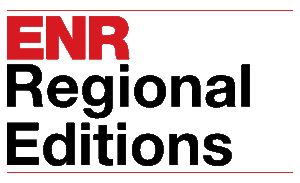
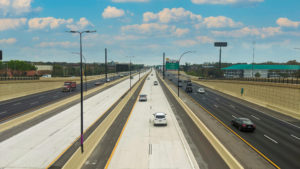
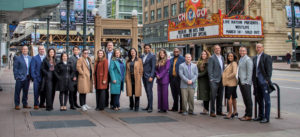
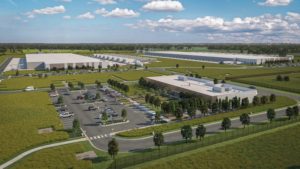
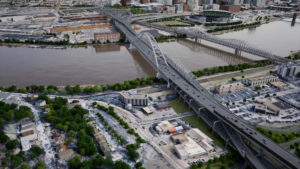
-Tideway-Aurecon_ENRready.jpg?height=200&t=1627594016&width=200)

Post a comment to this article
Report Abusive Comment